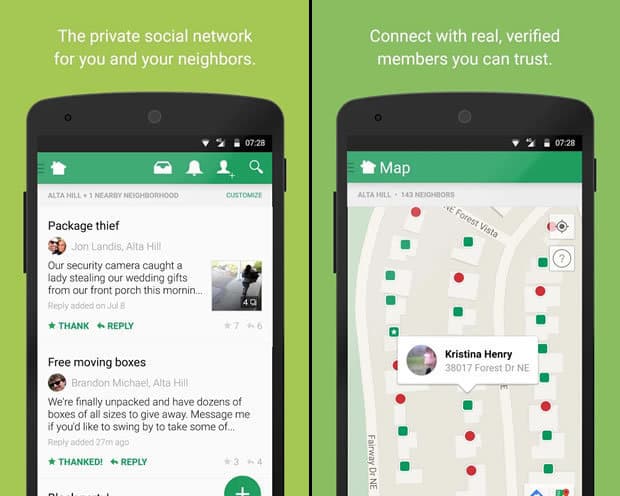The global tendency to conveniently move one’s household increasingly grows with expanding international travel opportunities. Specialized digital solutions and web resources are abundant right now, placing the most individually optimal traveling conditions, destinations, etc. at the tips of one’s fingers.
Let’s take a specific look at the prominent mobile moving apps which help users painlessly switch either a permanent or temporary place of residence and find a new home – at their key features and points of success.
The Moving Market & Technologies
In the current market, even the solutions with well-thought-out, tested in the field UX cannot stand the competition of more technically advanced alternatives. As a creator, if you are looking to implement a truly promising product that will efficiently help users to move house and won’t go out of date for years, pay attention to the following couple of trending and, sometimes, awe-inducing technologies:
- Big Data & Internet of Things (IoT). These two prominent tech concepts are at the peak of their popularity in the current market realities. In particular, the IoT integration apps for moving allows gathering data even in the locations where there is no Wi-Fi or where this type of network comes out as too resource-intensive. On top of that, specialized Big Data algorithms allow for autonomous data structuring and processing, which helps to significantly reduce the self-cost of product deployment.
- Virtual Reality. The only downside of this concept is the necessity for users to purchase additional VR devices (at least the most affordable ones, like Google Cardboard). This tech delivers astounding opportunities, however, allowing users to view virtual real estate objects both from the inside and outside before finally deciding to move house or take walks through remote locations without leaving one’s apartment.
- Artificial intelligence. Some of the best moving apps are based on the powerful tech concept of AI. It helps to process large data volumes (e.g., the data gathered by interconnected IoT devices), optimize the search feature, and serve as a foundation for a smart assistant which can be integrated with the app.
The Most Popular Moving Companies/Apps in the USA
Zillow
A frequent participant of various moving apps tops, this is a great freeware application for iOS and Android. It’s most often used by real estate agents, helping them to keep a list of available apartments by for rent or for sale covered by various moving companies or individuals. However, it still can be conveniently employed by a regular user looking for a new home.

As soon as you stop your choice on something, you get the dedicated agent’s contacts so you can discuss the details of acquiring or renting a realty object.
Moved
Moved is a freeware app for iOS which can help you handle the moving affair by assigning dedicated assistants. In order to select an assistant for you, the app first asks several key questions concerning the time of moving, the destination point, and other crucial indications.

After that, you connect with a live assistant that takes a good share of responsibilities for ordering shipping services, planning this shipping, composing documentation, and many other cumbersome moving tasks. Note that the solution works jointly only with the checked and some of the best moving services, so you won’t have to confirm the reputability of certain services yourself.
Sortly
The Sortly moving app, created for iOS and Android platforms, will be your virtual assistant in tracking all the things you pack when moving – a sort of a digital moving checklist that can be conveniently shared with moving companies. It is, basically, an advanced inventorying tool, which helps to save time on unpacking and won’t let a user forget anything when packing.

The solution is utterly simple in its principle of work – you just take a photo of an object to be packed and define points A and B of home moving it. After that, a user can simply pack everything up and pass the baggage to the shipment service workers. Once all things are transferred to a new place, it won’t take any effort to find where’s what – everything is situated according to the user specifications in the app.
This ‘moving planner’ is freeware, but for $4 a month, the premium account services can be employed, which provide some additional functionality. In particular, there appears an ability to create and scan QR-codes, which can be attached to boxes for more convenience. Individual inventory lists can also be uploaded to Dropbox or downloaded in the form of a PDF file and shared with other users.
Google Maps
Google Maps can also be a great moving planner. Getting from point A to point B most optimally can be pretty difficult even for the most ‘geographically-minded’ people. Google Maps is a globally popular solution to help handle that without any issues. It provides convenient navigation (even the voice navigation), shows the most optimal routes for traveling by public transport, car or even on foot, and helps go by the local transportation.

Google Maps have grown to cover even the least-populated locations. Last but not least, one can view real images of most environments either from the first-person or satellite perspective.
Wunderlist
When we’re talking about moving, one has to understand that the affair as important as this one requires a consistent approach (i.e., one cannot simply pack all stuff in a few hours and not miss a thing). Taking weeks to pack up most properly is also not an optimal option, however.

A compromise may be found with the help of the Wunderlist moving app. It can help optimally plan the moving routine and pack according to the formed list (kind of an algorithm).
Wunderlist is a convenient moving checklist and a business planner where one can set up deadlines, create notifications, and even export tasks for other users to view. Definitely a worthy solution to try.
TaskRabbit
TaskRabbit is a very smart (and completely free of charge) moving app for iOS and Android users. In particular, it rapidly provides local household, babysitting, and pet care service providers’ contacts.

All that TaskRabbit asks for to start searching optimal options is the timeframe, during which the needed service has to be provided. Next, the app offers a list of available expert services approved by the solution itself. The most fitting provider can be selected by the service pricing or an individual specialist’s CV. According to practice, the average specialist pricing is about $35 per hour.
Nextdoor app
Last but not least in our list of the best apps for moving is yet another freeware app for iOS and Android (which, by the way, is also available through a web browser). The solution cover over 145 thousand US neighborhoods and helps those planning to move their place of residence find new acquaintances (not only among neighbors but also among the experts specializing in helping other people with the routine stuff, like babysitters, dog walkers, gardeners, etc.). Nextdoor also indicates how good a certain neighborhood is all-around (it provides some firsthand info about crime rates and level of education in local schools).

The app is made in the form of a social network where contacts are found based on the user’s location (similarly to Tinder).
Key Success Factors of Mobile Apps for Moving
If we analyze the previously-listed best apps for moving, we can define a number of particular features that help them stay in the lead of the game. Namely:
- Geolocation. If you are creating an app that gathers and provides data about new moving locations, it is only obvious that you should involve a specialized API for geolocation (e.g., the Google Maps API). Integration of APIs, usually, takes neither too much time nor effort and, in turn, you will be able to provide you user audience with a truly up-to-date, useful product.
- Push-notifications. In terms of competitive ability, mobile apps should not only be useful and help users painlessly handle at least one task but it also should be able to take real ‘care’ of the user. Push notifications can provide just such care. It is a feature ‘by default’ for all the existing decent moving apps, which doesn’t irritate the user, yet provides the optimal means of interaction with them.
- Third-party service integration. You cannot pack everything into one solution, that’s why it’s best to leave it ‘open-ended’, i.e., integratable with third-party solutions (e.g., the Facebook Login API can be integrated to provide fast sign-up).
- Personalization. The more a user sees individually-oriented features in an app, the better their UX will be. For instance, many creators and owners of apps for moving implement a special configuration panel in user cabinets where custom adjustments can be made and such. And don’t forget about convenient moving checklists.
- Extra functionality. Without a doubt, even the best apps for moving can be ‘outrun’ by solutions that offer utter accessibility and multipurposeness. In order to reach that, build an MVP initially and think what additional functionality will make it a top product.
Conclution
As you can see, apps for moving provide a good, profitable field for exploration and bring lots of use to their user audience with moving checklists, next door services, shipping opportunities, etc. If you want to build your own moving app, contact us and our experienced narrow-profile mobile software development experts will help you properly implement a solution of any complexity.

New Trends in Energy Trading and Risk Management Software











